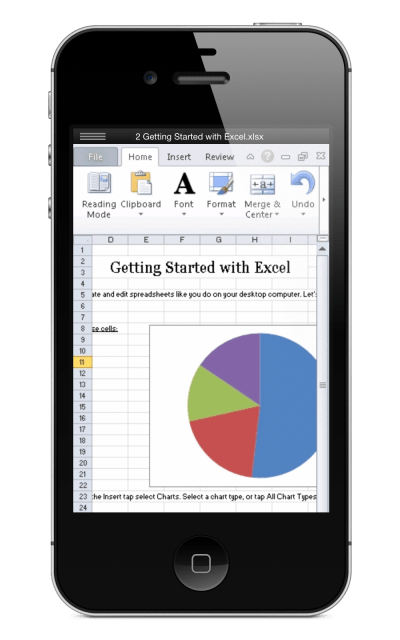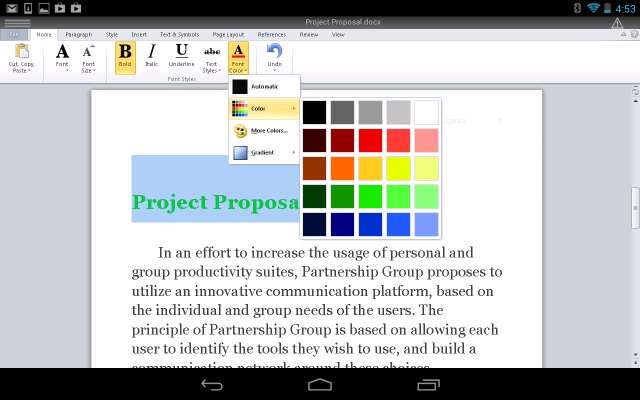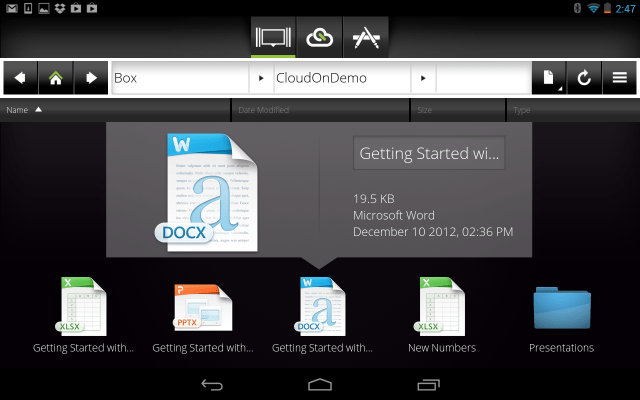CloudOn, the popular free productivity service that brings Microsoft Office to mobile devices, just launched version 3.0 of its mobile app. With this launch, CloudOn is bringing its service to the iPhone, iPad Mini and Nexus 7. This means CloudOn is now available on all of Apple’s mobile devices, as well as on Android tablets running Honeycomb and Ice Cream Sandwich version 3.1 or higher, as well as Jelly Bean tablets running Android 4.1 or higher. A version for the new Kindle Fire HD 7 should also be available shortly.
Today’s launch isn’t just about support for new devices, though. The company is also introducing support for Microsoft SkyDrive in addition to the already available support for Dropbox, Box and Google Drive. Unlike other productivity services, CloudOn isn’t interested in running its own cloud storage service. Instead, as the company told me earlier this week, the team wants to focus on doing what it does best: redefine productivity around mobile. “With CloudOn on the iPhone, iPad mini and Nexus tablet, we’re one step closer to ubiquitous mobile productivity,” said CloudOn CEO Milind Gadekar. “We continue to focus on our mission of reinventing productivity in mobile and social environments.”
 To bring Microsoft Office to the smaller screen of the iPhone after mostly focusing on tablets until now, the team had to make a few changes to its interface. The Ribbon, for example, was tailored to the iPhone by simplifying it and by spacing the icons out a bit more in order to make selecting them easier. As the CloudOn team told me, the expectation is that phone users won’t use the tool so much to create documents anyway.
To bring Microsoft Office to the smaller screen of the iPhone after mostly focusing on tablets until now, the team had to make a few changes to its interface. The Ribbon, for example, was tailored to the iPhone by simplifying it and by spacing the icons out a bit more in order to make selecting them easier. As the CloudOn team told me, the expectation is that phone users won’t use the tool so much to create documents anyway.
The tablet version also puts a stronger emphasis on the file manager concept than the phone version, which focuses more on recently used files. Indeed, the team found that while its users keep coming back to the app, the sessions – even on tablets – tend to be relatively short and mostly focus on consuming content and making small edits. Very few users currently use the tablet apps to create new documents, and CloudOn expects this number to be even smaller on the phone.
I had a chance to test the iPhone app for the last few days and it works just as advertised. The only real complaint I have is that it’s often very obvious that you are not looking at a native interface when you are reading and editing documents. CloudOn uses virtualized instances of Office to display documents, and that means you also don’t get native fonts, making the documents look a bit pixelated at times.


